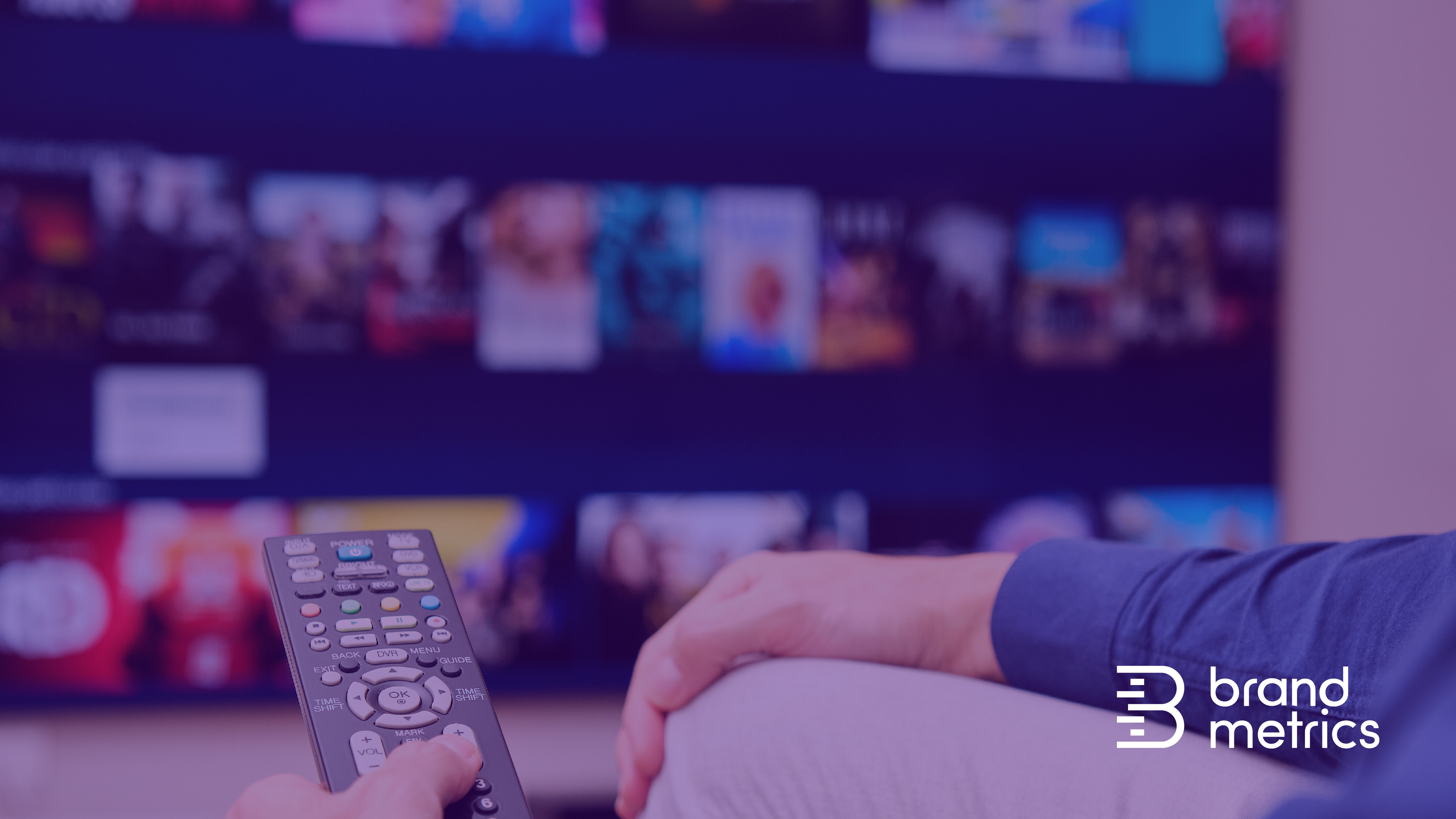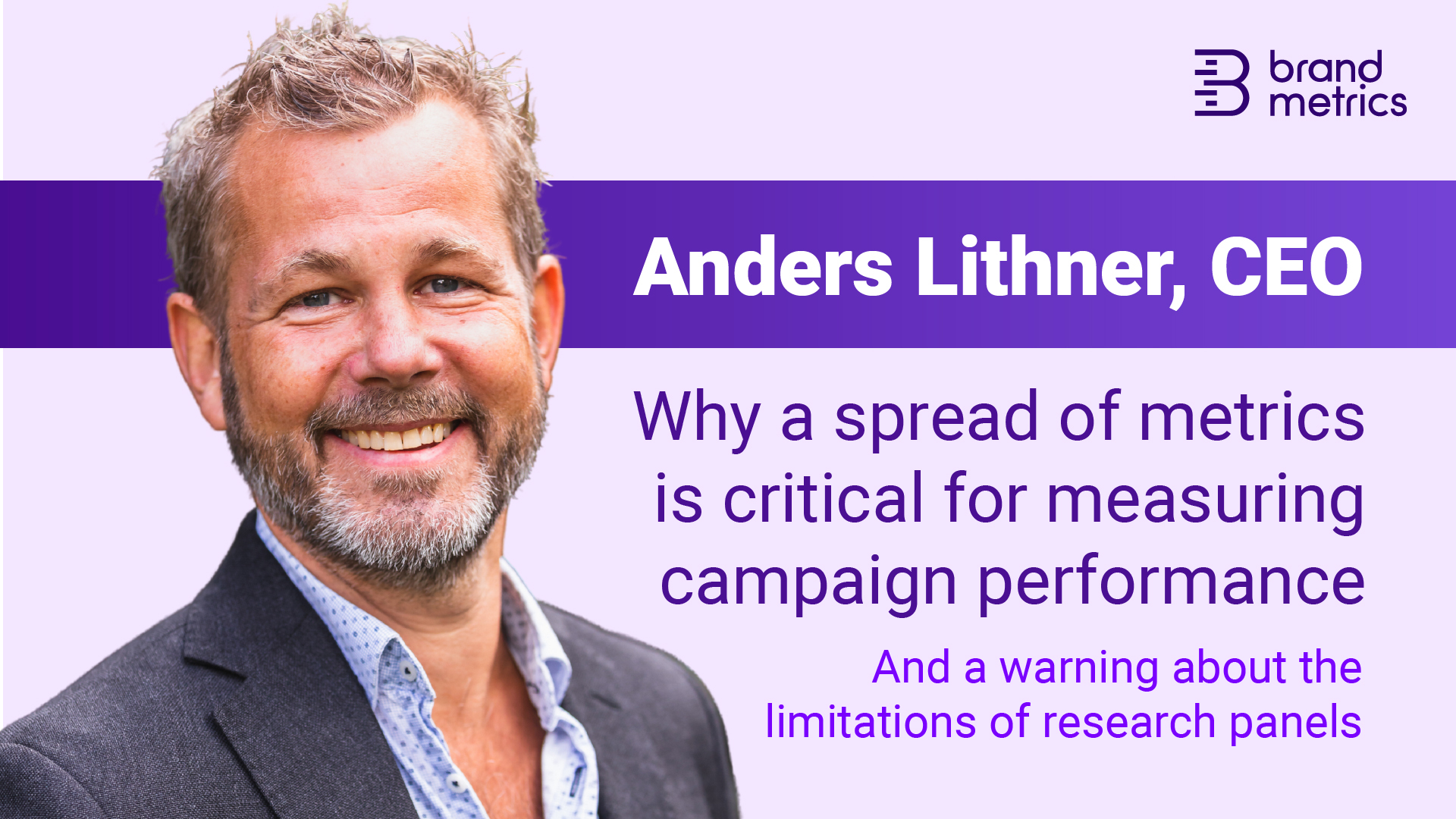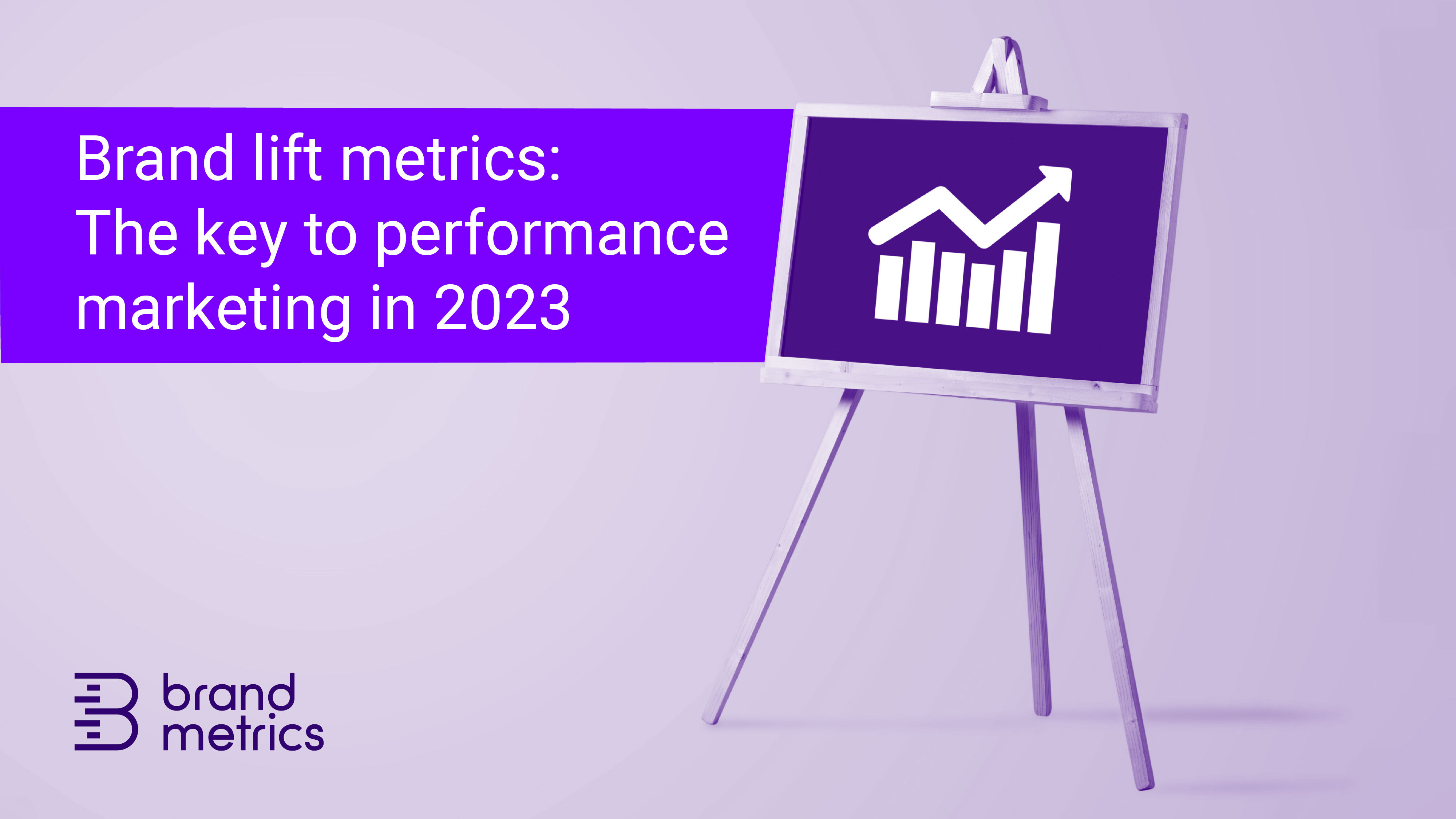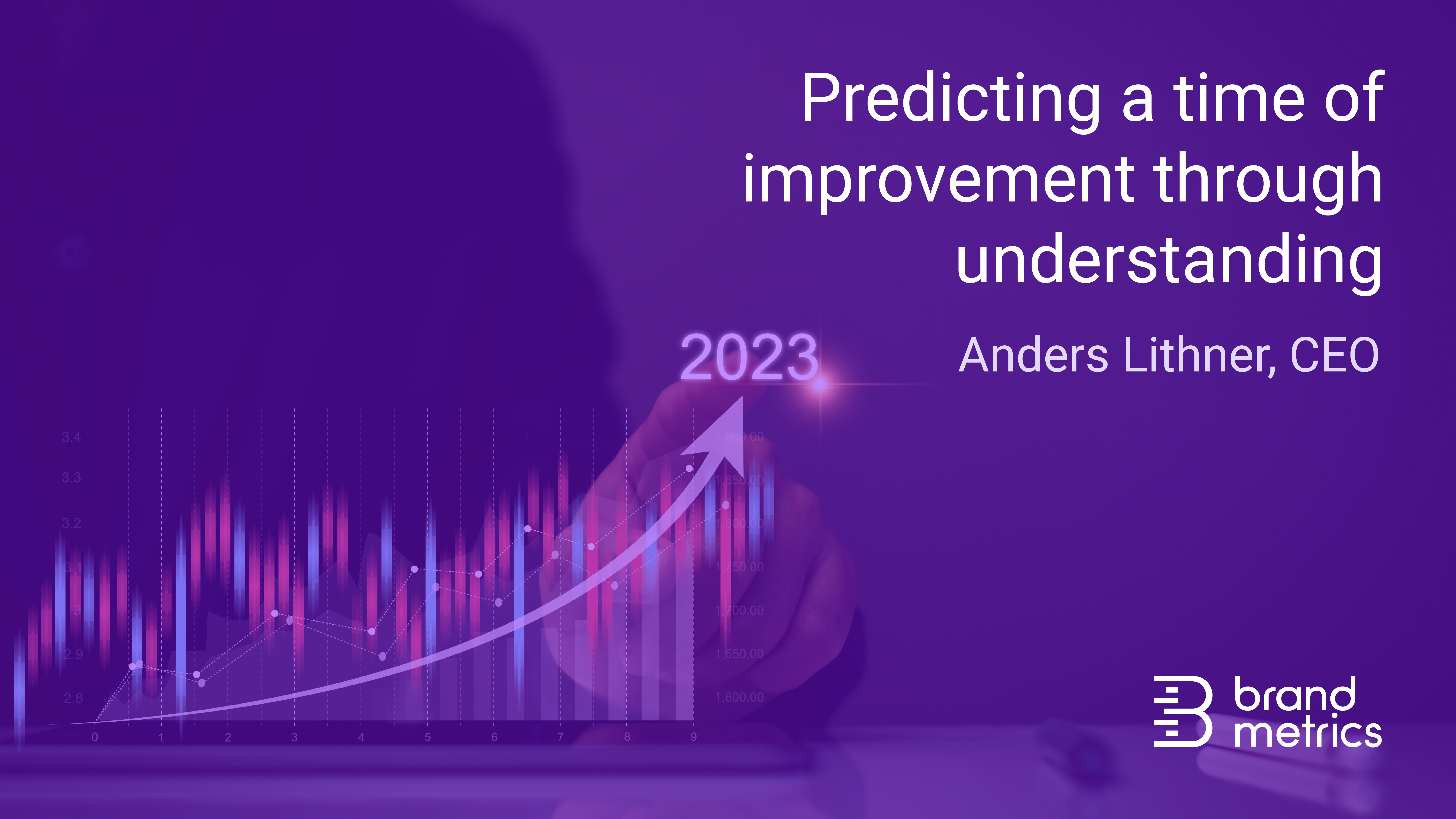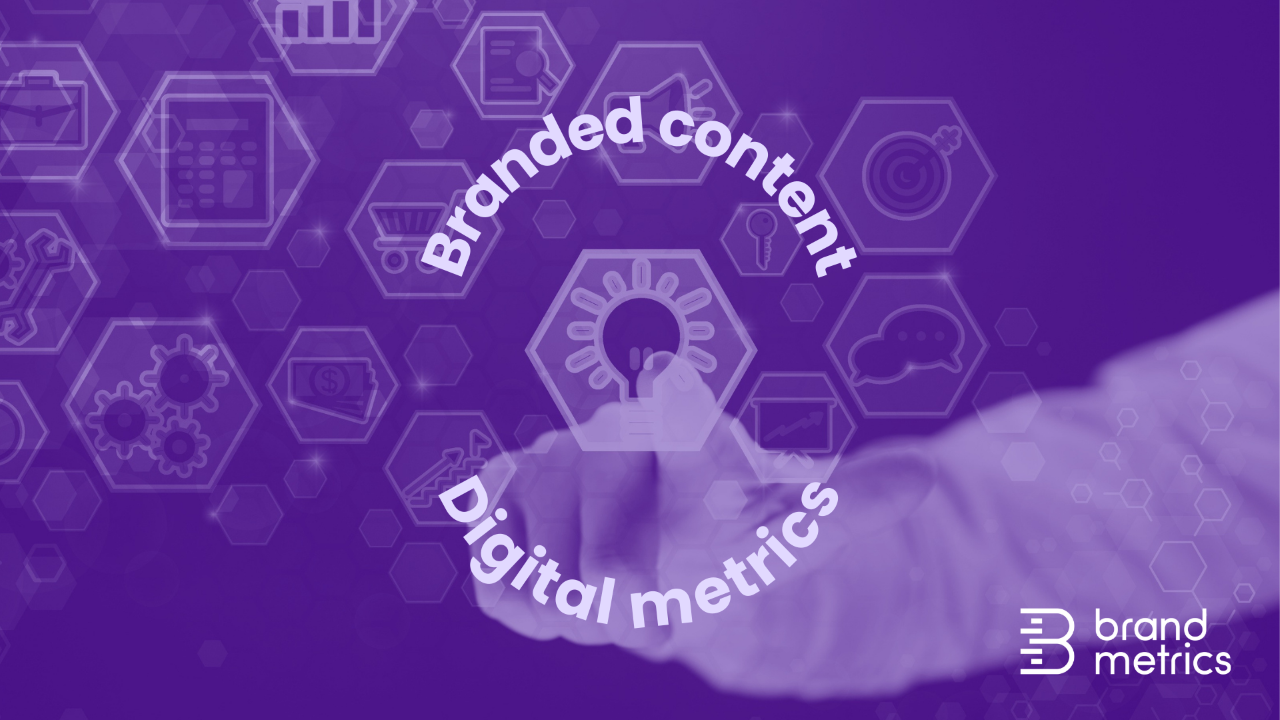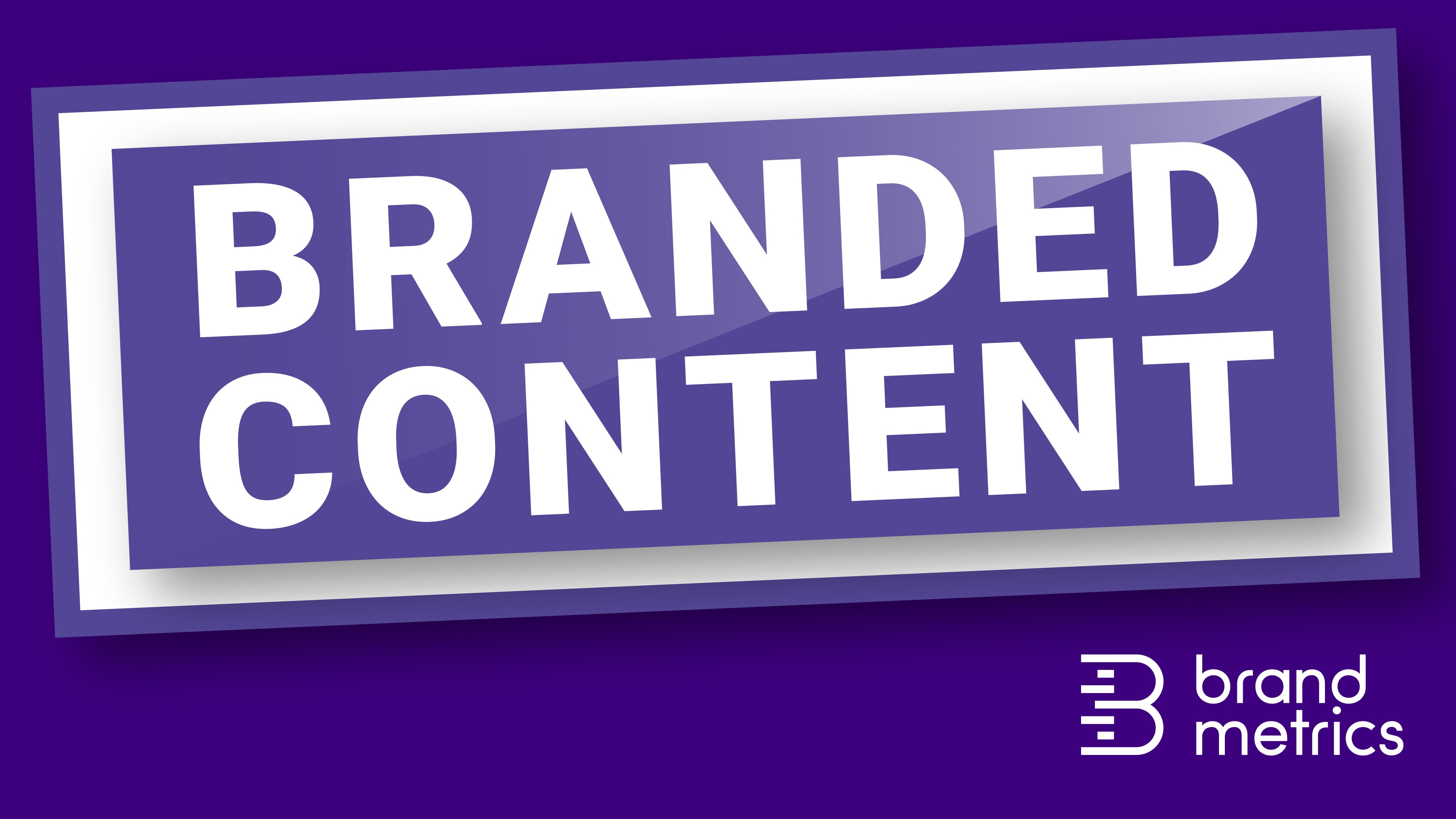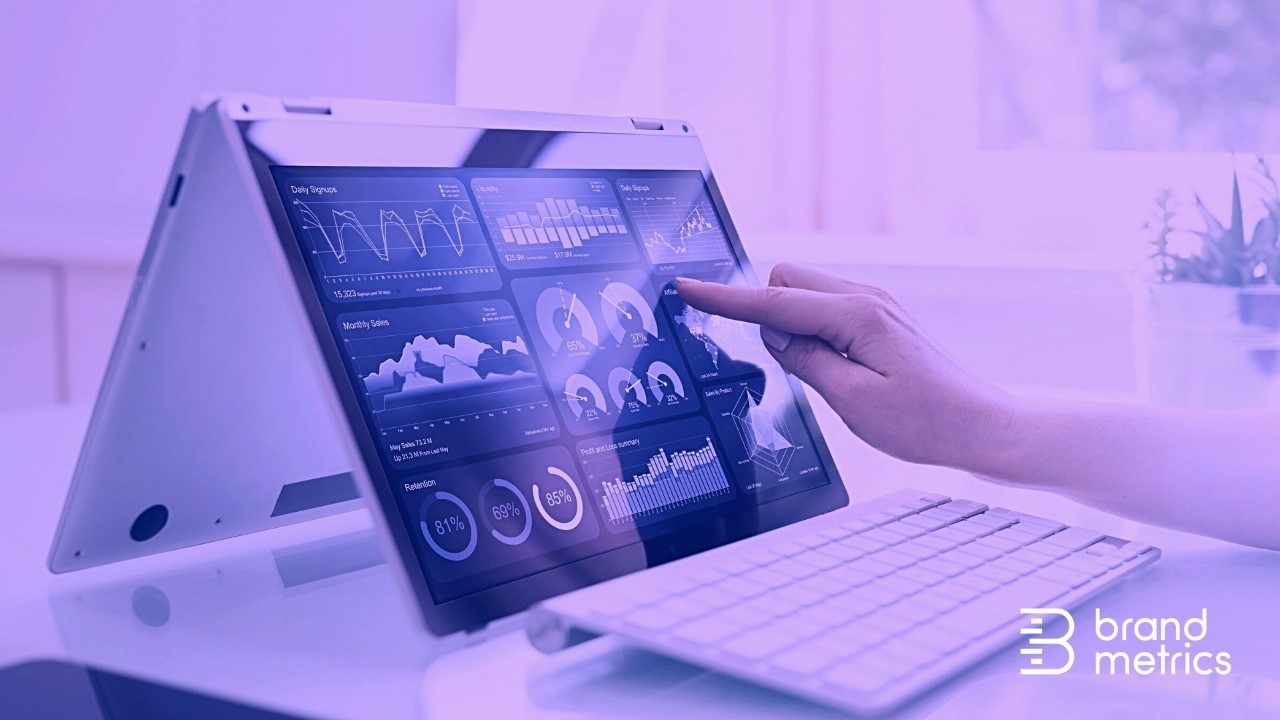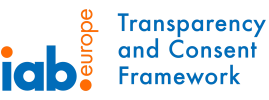What is an optimal frequency level?
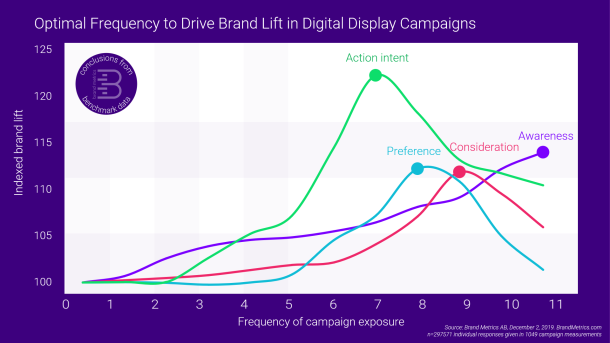
Optimal frequency is typically higher than what is reflected in the average digital campaign plan. It also varies depending on what kind of effects the campaign messages are designed to create. Here is some evidence-based guidance from the Brand Metrics database.
What is the optimal frequency for a digital campaign? That is like asking for the optimal size of a hex key. It depends on what bolt you want to tighten.
Yet, in the Brand Metrics reference database there are millions of rows of data containing individuals’ claimed brand perceptions, side by side with exposures to campaigns from the same brands. It allows us to explore this massive dataset and reach some universal conclusions. The graph below illustrates the brand lift at different levels of frequencies.

Within this, there will clearly be huge differences in brand uplift between different ad formats and creative approaches. The graph is merely showing the indexed averages, across a vast number of very different campaigns – in all, over 2,000 display campaigns, measured in identical ways.
Note: To further clarify, this data represents frequency per person, based on one campaign during the campaign period. This is not the same as the average frequency of a campaign or the frequency capping that limits the maximum frequency per device. This is a comparison between individuals, across thousands of campaigns, rather than a comparison between campaigns.
Conclusion one: Frequency is a good thing
Disregarding individual variations between campaigns, one thing is clear: on average, frequency is a good thing. As shown by this graph the brand lift created by exposing people 1-4 times to the same campaign is limited. The optimal frequency is 7 and upwards. Given that average campaign frequency targets rarely reach that high, there is room for increases across all metrics.
Many rules of thumb in digital advertising are inherited from television. But digital campaigns rarely enjoy undivided attention for 15 or 30 seconds, so it makes sense that digital frequencies have to be be higher for campaigns to succeed.
This is one reason why some advertisers feel digital is not working for them. It’s because they never leave the beginner’s slope of frequency (1-4x) at the foot of the mountain. In broad terms, it is a better use of money to expose the same person 7 times, than to stop at 6 and expose a new person 1 time.
Conclusion two: Frequency can be dangerous
If the audience is not exposed a sufficient number of times, a digital campaign investment will have limited return. That said, exposing people too many times may also hurt brand lift and involve a lot of unnecessary expenditure.
If the campaign is trying to push uplift in action/purchase intent, the optimal frequency in the Brand Metrics database is 7. However, exposing someone 6 times is better than exposing the same person 9 times and the latter is obviously more expensive.
Within this data, we are looking at indexed averages so don’t pay too much attention to the absolute figures - there is a clearly a difference between huge takeovers and small banners, between gentle exposures of a slogan and pushy calls for action, etc. But the key takeout is that there is a point where exposure becomes tedious and frequency planning deserves some serious thinking.
Conclusion three: Frequency = awareness
Awareness is the one exception where the is no limit. The higher the frequency of exposure, the higher the awareness uplift. This is to be expected. The more often you meet someone, the likelier you are to identify that person in a crowd. The same goes for brands. You don’t accidently walk pass your children or your spouse in the street, as you may with that colleague from the other floor that you only meet in the elevator now and then. This is why soft drink superbrands hang their logos up in shops and bars: just to remind you of their existence.
However, brand awareness has little to do with attitudes, preference and intentions to interact. After all, history’s worst dictators also have familiar faces that would be hard to walk by in the street without noticing. Being a familiar brand is an advantage that makes it easier to grab people’s attention, but that attention needs to be leveraged by saying things that make the audience feel good about interacting. Always asking them to buy your stuff may not be the best choice of messaging when the frequency dial is turned up high.
Conclusion four: The right message for the right frequency
The overall rule derived from looking at Brand Metrics benchmarks data is this: the higher up in the funnel you are, the more effort you should put behind adding extra exposures to the same person. The closer to the narrow bottom of the funnel you operate, the more careful you have to be about hitting just the right frequency, not too low, not too high.
Brand awareness is at the top of the funnel. Strive for high frequency of exposure, but keep the campaign content focused on messages about your beautiful brand’s existence. Otherwise the other metrics may start to suffer. New brands need to tell the world that they exist, but equally important, old brands need to keep reminding us, to make sure we always have them in mind.
Brand consideration is the next step after ensuring people know that you exist. The risk of not creating consideration uplift due to too low frequencies is bigger than the risk of hurting uplift by serving the same person too many times, providing the messaging is focused on why it is the brand should be considered.
Brand preference is closer to the bottom of the funnel. People already know of your brand and would consider it if in need of what you have to offer. You are now asking them to make your brand one of their favorite brands in the category. Don’t ask too often, that’s tedious.
Action/purchase intent is as close as we get to the bottom of the funnel before someone actually buys. Again, if you are that colleague in the elevator, maybe don’t ask me out on a date each time we ride together if I didn’t say yes the first seven times you asked. But do remind me about your existence and maybe say something likable. At the end of the day I will want to date a brand that I’m familiar with and that I have filed as ‘one to consider’ in my brand-cluttered brain.
Finding your sweet spot
Here we have merely provided some universal conclusions about frequency, based on our meta-data. However, what works in one channel, or in one industry, or for one brand, using one type of creatives and formats, may not work the same way for another.
Systematically analyzing brand lift data at scale is a great way of learning how to optimize campaign frequency to create us much uplift as possible, at the end of the funnel where it is most needed, without over-spending or hurting what you are hoping for elsewhere the funnel.
If you are a digital campaign planner, you can however rest assured that the data helps to support your efforts to show that optimal frequency is a little higher than you might normally strive for.

